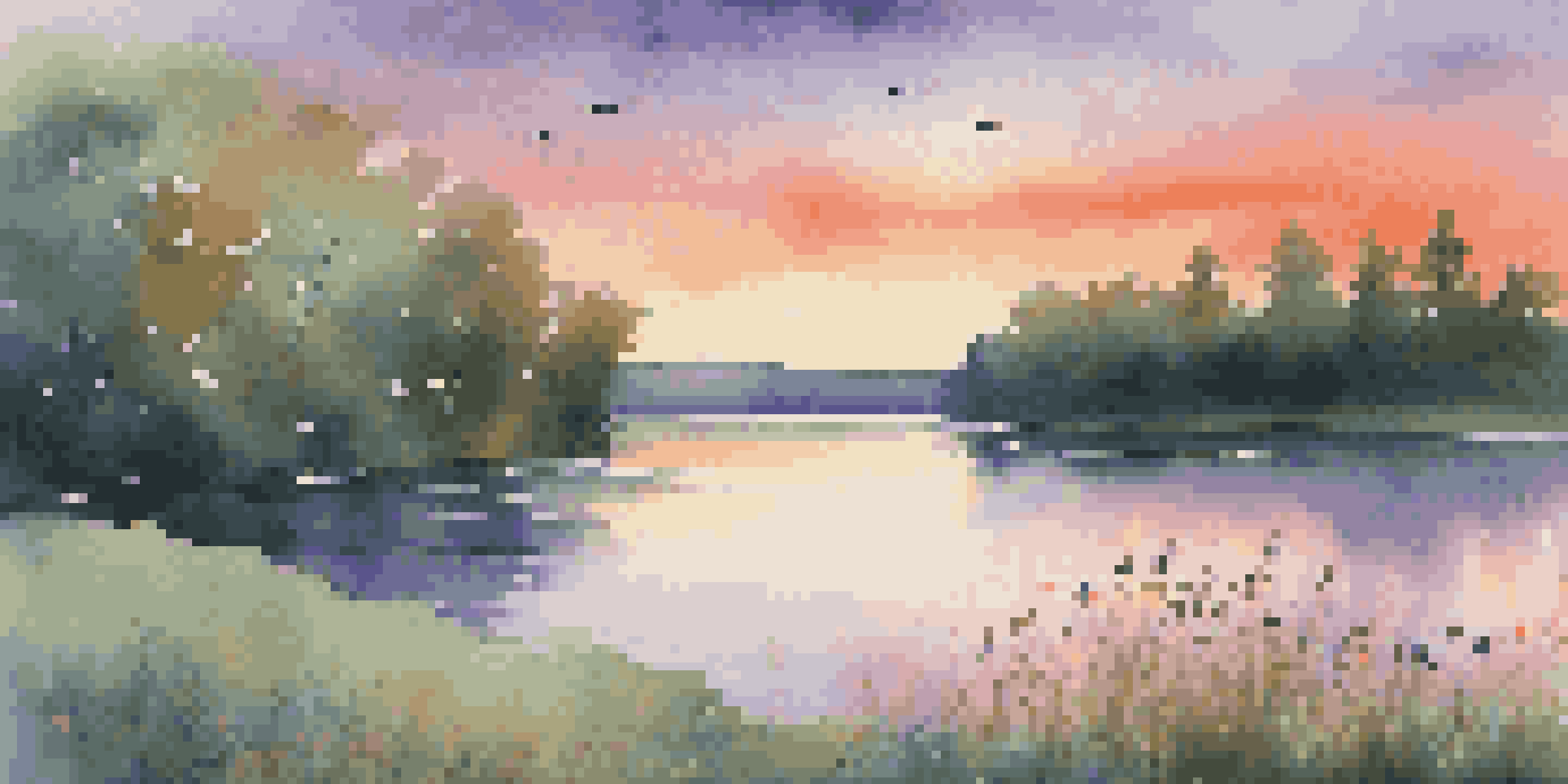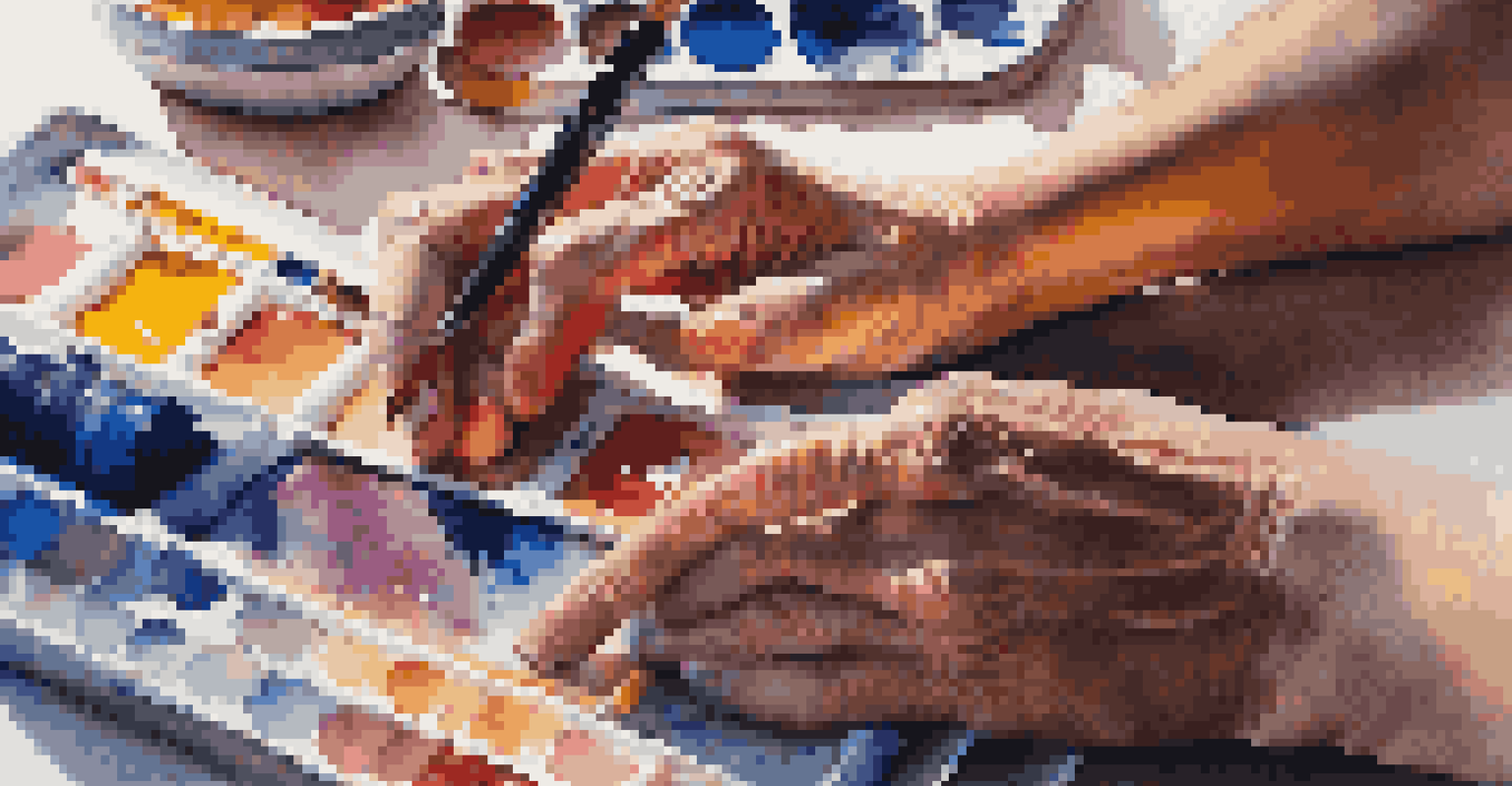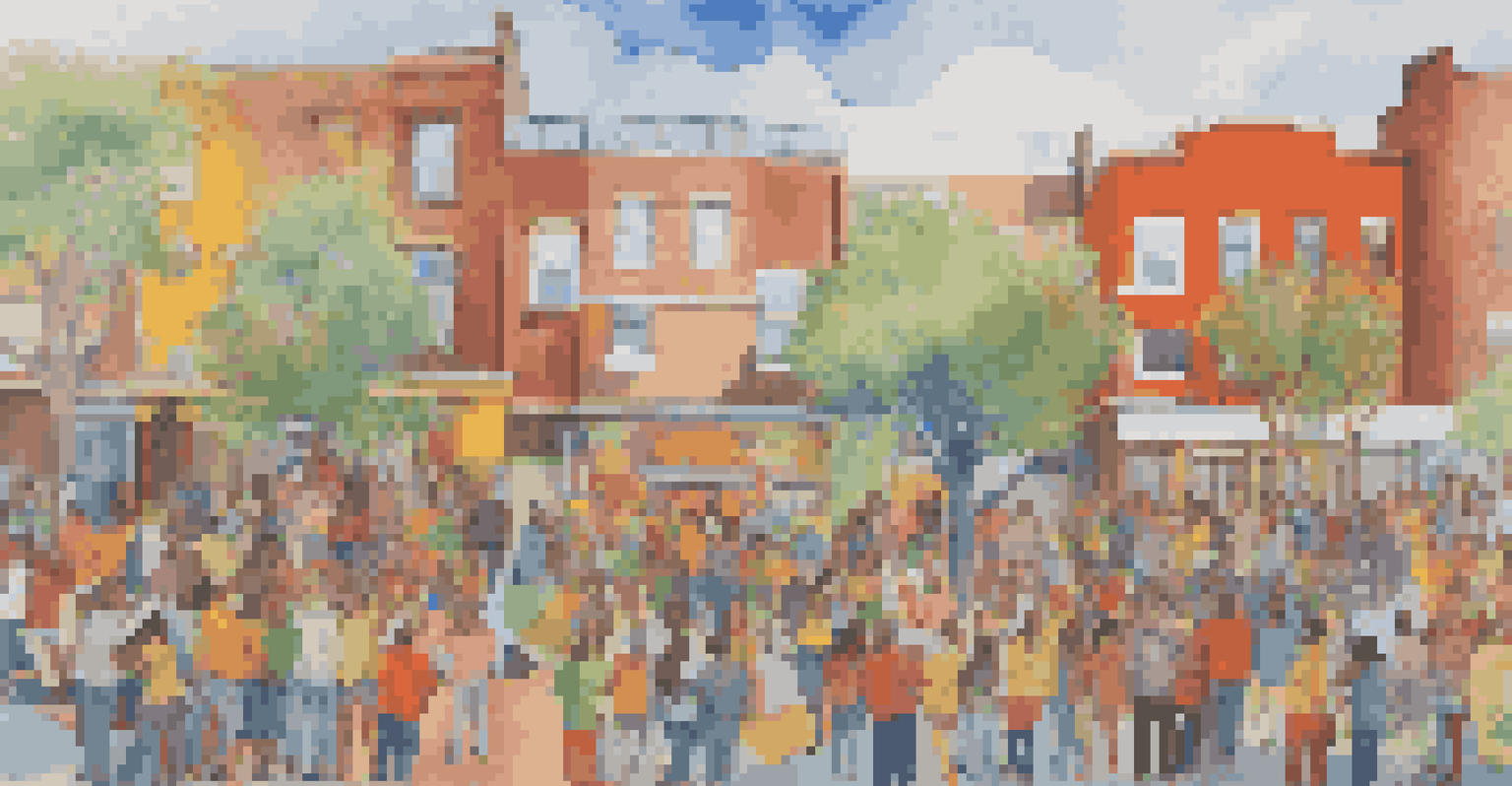Art and Empathy: How Visuals Foster Understanding of Emotions

The Power of Art in Expressing Emotions
Art has an incredible ability to express emotions that words sometimes fail to capture. Through colors, shapes, and forms, artists convey feelings that resonate deeply with viewers. For instance, a vibrant painting can evoke joy, while darker tones might elicit feelings of sorrow or introspection. This emotional language of art helps bridge gaps in communication, allowing us to connect on a human level.
Art is the most beautiful of all lies.
Consider a piece of abstract art that might leave some viewers puzzled while striking a chord with others. The beauty of art lies in its subjective nature; it invites personal interpretation and reflection. This creates a shared experience where individuals can explore their own emotions and those of others, fostering a sense of empathy. By engaging with art, we not only see but also feel, creating a deeper understanding of diverse emotional landscapes.
Moreover, art encourages dialogue about feelings that can be challenging to discuss openly. When a viewer sees a piece that resonates with their experience, it can open up conversations about shared struggles or joys. This shared emotional journey can lead to greater understanding and compassion, highlighting the role of art as a powerful tool for emotional connection.
Visual Storytelling: A Window to Emotions
Visual storytelling is a powerful medium for conveying complex emotional narratives. Whether through photography, film, or graphic novels, visuals can articulate nuanced feelings in ways that text alone may struggle to achieve. A single photograph of a candid moment, for example, can convey a wealth of emotions, from happiness to nostalgia, instantly connecting with the viewer's own experiences.

In graphic novels, artists often use a combination of imagery and text to enhance emotional depth. The way characters are drawn, the color palettes used, and even the layout of panels all contribute to the storytelling. This synergy allows readers to experience the emotions alongside the characters, making it a deeply immersive experience. When we see a character in distress, we can't help but feel empathy for them, bridging the gap between fiction and reality.
Art Expresses Emotions Powerfully
Art conveys feelings beyond words, enabling deep emotional connections through subjective interpretation.
Moreover, visual storytelling often transcends language barriers, speaking directly to our emotional cores. This universality can be particularly impactful in diverse societies where cultural differences may complicate communication. By relying on visual cues, stories become accessible and relatable, inviting everyone to share in the emotional experience regardless of their background.
Art as a Tool for Healing and Understanding
Art therapy has gained recognition as a powerful tool for healing emotional wounds. It provides individuals a safe space to express their feelings creatively, allowing them to process complex emotions that might be difficult to articulate. For instance, someone dealing with trauma might find solace in painting, using colors and strokes to represent their journey towards healing, thus fostering understanding both within themselves and with their therapists.
The only time I feel alive is when I'm painting.
Engaging in creative expression can also facilitate emotional release, reducing stress and anxiety. The act of creating art can be therapeutic in itself, enabling individuals to explore their emotions in a non-threatening environment. By turning to art, they can confront feelings of sadness or anger, and in doing so, cultivate empathy for their own experiences and those of others facing similar challenges.
Additionally, community art projects often serve as a collective healing process, bringing people together to share their stories and emotions. When individuals collaborate on a mural or a community artwork, they not only express their feelings but also listen and connect with the experiences of others. This shared artistic endeavor can foster a strong sense of empathy and understanding within communities, highlighting the transformative power of art.
Color Psychology: How Colors Influence Emotions
Colors play a significant role in how we perceive emotions in art. Each hue can evoke specific feelings; for instance, warm colors like red and orange often inspire energy and passion, while cool colors like blue and green can bring about calmness and tranquility. Artists frequently use these psychological associations to enhance the emotional impact of their work, creating a visceral experience for the viewer.
Take, for example, the use of color in film. Directors often choose specific palettes to set the tone of a scene—darker colors might signal tension or conflict, while bright colors can suggest happiness or hope. By manipulating color, filmmakers guide audience emotions, making them feel a part of the narrative journey. This understanding of color psychology is crucial for artists and creators aiming to connect with their audience on an emotional level.
Visual Storytelling Transcends Language
Visual narratives in mediums like photography and graphic novels allow for shared emotional experiences, connecting diverse audiences.
Understanding color psychology not only enriches our experience of art but also deepens our empathy. When we recognize how colors can influence emotions, we become more attuned to the feelings being expressed. This awareness enhances our ability to connect with both the artwork and the artist, fostering a greater understanding of the emotional journeys represented in various forms of visual art.
The Role of Cultural Context in Emotional Expression
Cultural context significantly influences how emotions are expressed and interpreted in art. Different cultures have unique ways of portraying feelings, shaped by their values, traditions, and societal norms. For example, in some cultures, emotional restraint is valued, leading to subtler forms of expression in art, while others may embrace boldness and flamboyance.
When we engage with art from different cultures, we open ourselves up to new perspectives on emotions. A viewer may find themselves moved by a piece that resonates with their own experiences but is expressed in a culturally distinct way. This exploration helps broaden our understanding of how emotions can manifest differently across societies, enhancing our capacity for empathy and connection.
Additionally, cultural art forms often serve as a lens through which we can examine the emotional landscape of a community. For instance, folk art often reflects the everyday experiences and feelings of the people it represents. By studying these works, we gain insight into the collective emotional experiences of diverse groups, fostering a deeper appreciation for the ways in which art can bring us together across cultural divides.
Empathy Through Art: Bridging Personal Experiences
Art has a unique ability to create empathy by allowing us to step into someone else's shoes. When we view a piece of art that reflects struggles or triumphs, we often find parallels in our own lives. This connection fosters a sense of understanding, reminding us that we are not alone in our feelings—whether they be joy, sadness, or anger.
For example, a powerful photograph of a moment of vulnerability can elicit empathy from viewers, encouraging them to reflect on their own experiences. This emotional resonance helps break down barriers, inviting dialogue about feelings that are often kept private. By sharing these stories through art, we build a community of understanding and compassion where everyone feels valued and heard.
Art Fosters Healing and Empathy
Engaging in creative expression through art therapy promotes emotional healing while building understanding within communities.
Moreover, art can serve as a catalyst for social change by highlighting issues that affect marginalized groups. When artists use their work to address societal challenges, they invite viewers to confront uncomfortable truths and recognize the emotions tied to these issues. This engagement not only fosters empathy but also encourages action, inspiring individuals to advocate for change in their communities.
The Future of Art and Empathy: New Mediums and Technologies
As technology continues to evolve, new mediums are emerging that enhance the emotional connection between art and its viewers. Virtual reality (VR) and augmented reality (AR) are pushing the boundaries of how we experience art, allowing us to immerse ourselves in emotional landscapes like never before. For instance, a VR experience can transport us into a painting, allowing us to explore its emotional depth interactively.
Additionally, digital art platforms are providing artists with new opportunities to express emotions and connect with audiences worldwide. Through social media, artists can share their work and the stories behind it, creating a dialogue that transcends geographical boundaries. This democratization of art not only fosters empathy but also amplifies diverse voices, enriching our collective emotional experience.

Looking ahead, the fusion of art and technology promises to enhance our understanding of emotions even further. As we explore these innovative mediums, we can expect to see even more profound connections between art and empathy, allowing us to share our emotional journeys in ways that resonate with a global audience. The future of art is bright, filled with possibilities for deeper understanding and connection.